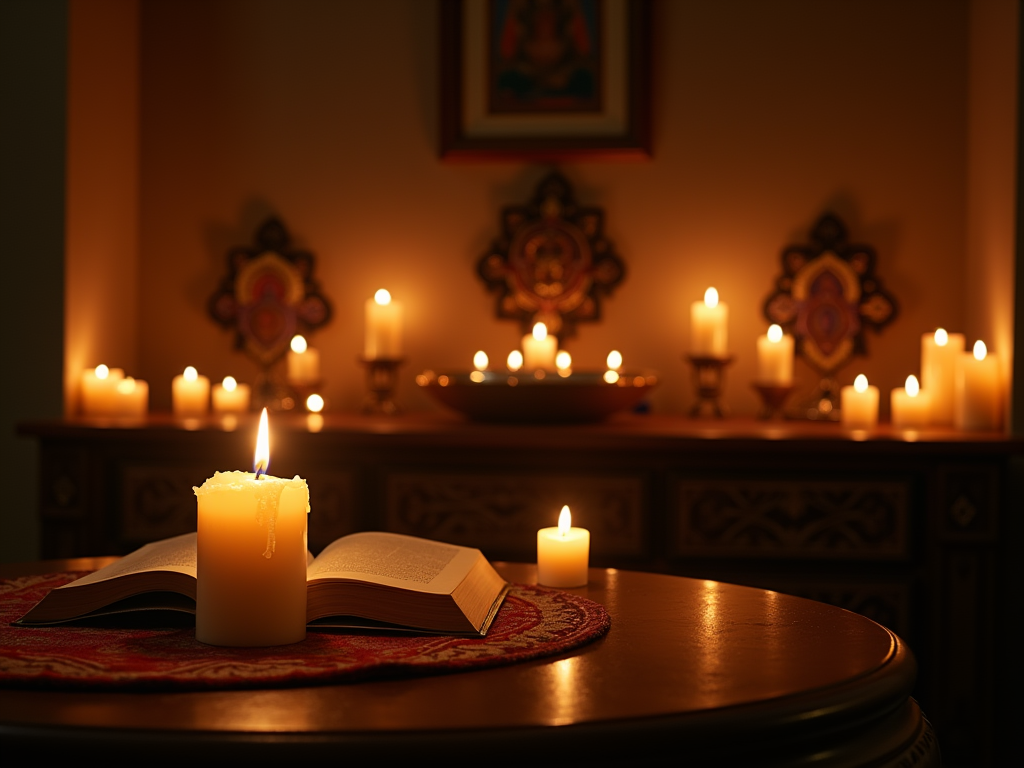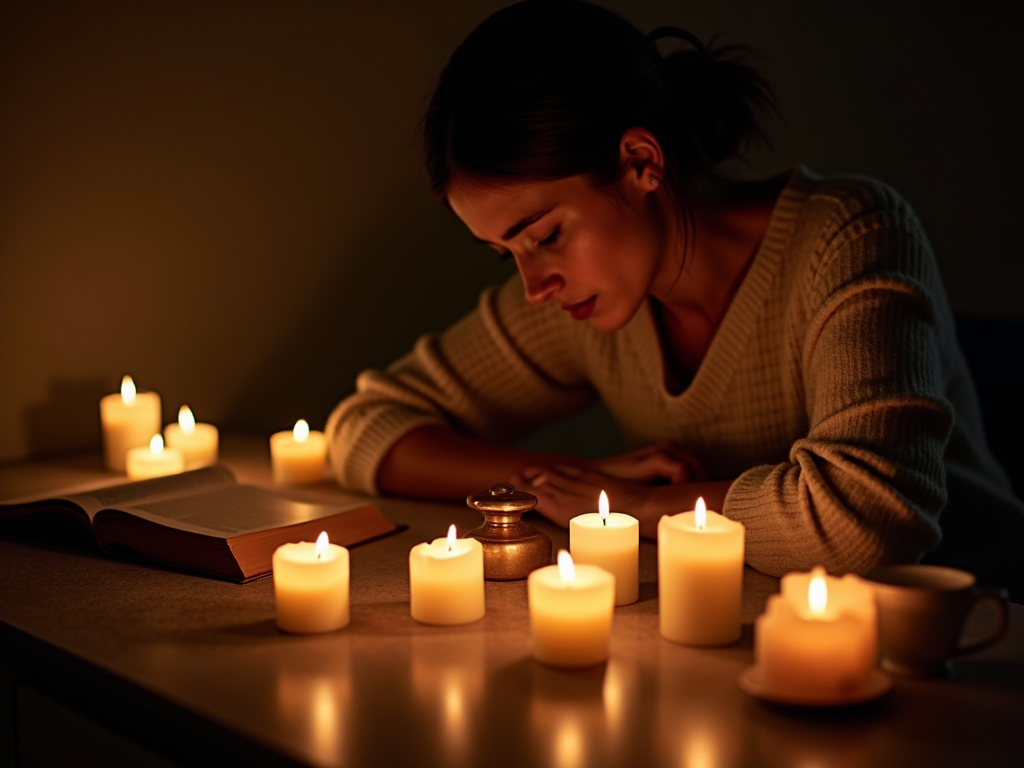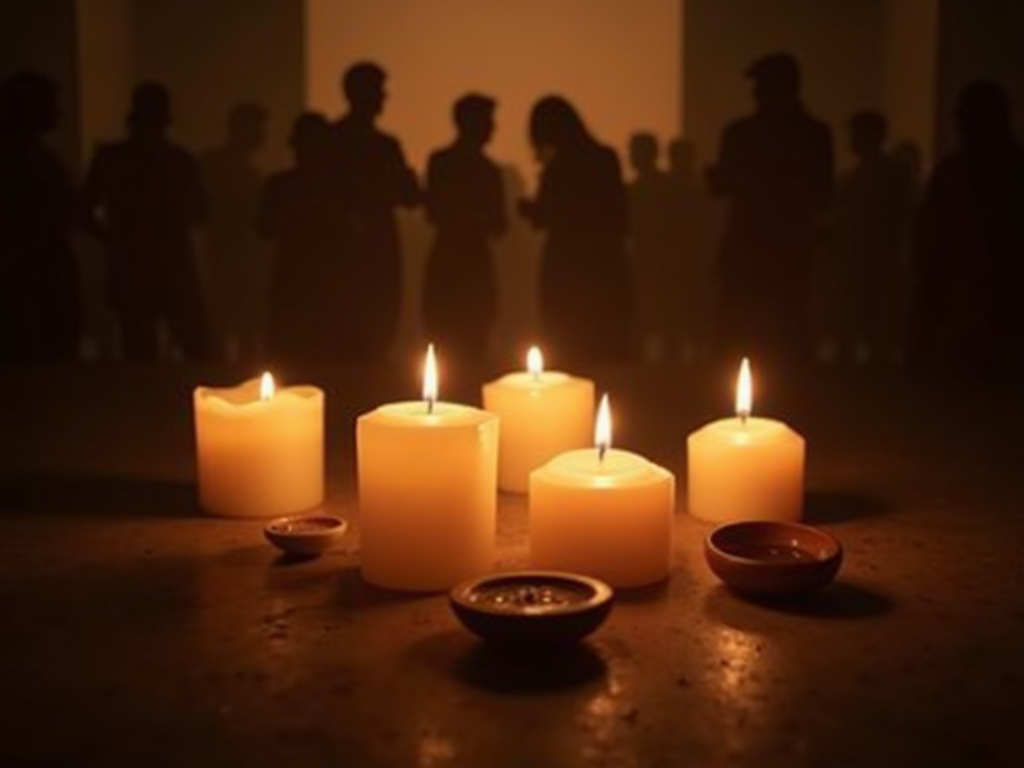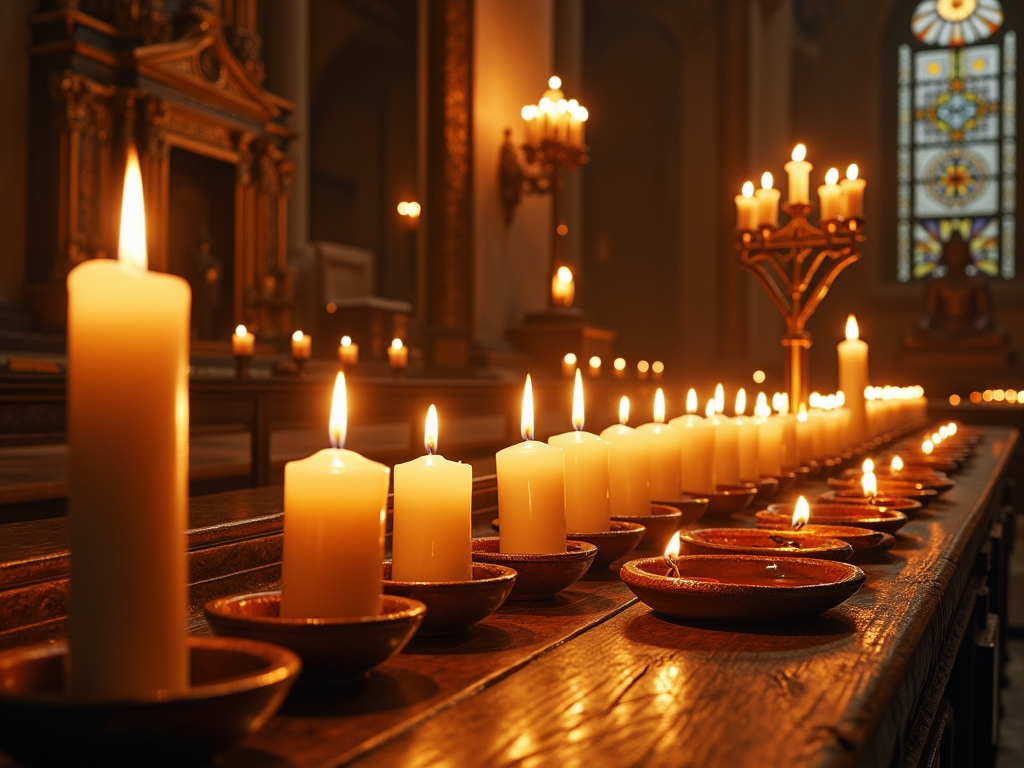
The Cultural Significance of a Candle’s Gentle Flame
A candle’s gentle flame holds deep cultural significance that stretches back more than 5,000 years. Its warm glow still creates meaningful connections and emotional resonance in modern life.
Key Takeaways
- Candles represent understanding and enlightenment while serving as metaphors for knowledge overcoming ignorance.
- They create measurable effects on wellbeing, reducing anxiety and promoting relaxation according to scientific research.
- Religious ceremonies across faiths use candles as sacred symbols, from Christian Advent wreaths to Jewish menorahs.
- Candles play a crucial role in marking life’s milestones through celebrations, memorials, and cultural traditions.
- The finite nature of a burning candle symbolizes life’s impermanence while its light represents human impact and legacy.
The Deeper Meaning of Candlelight
The soft illumination draws people together, offering comfort and spiritual connection. Scientific studies confirm that candlelight reduces stress and promotes a sense of peace. Religious traditions worldwide incorporate candles into their most sacred rituals, from lighting memorial flames to marking holy days.
Major life events gain deeper meaning through the presence of ceremonial candles—birthdays, weddings, and memorials all feature their glow. The temporary nature of a candle’s flame reminds us to cherish each moment while its bright light inspires us to make a lasting positive impact.
The Sacred Power of Light: How Candles Illuminate Our Lives
Light has always held deep meaning for humanity, with candles standing as powerful symbols across cultures and time. Through the rich spiritual traditions of candlelight, I’ve seen how these simple objects carry profound significance beyond their practical purpose.
The Enduring Impact of Candlelight
Before the invention of electricity, candles served as our main source of light for over five millennia. As ancient civilizations created the first candles, they quickly discovered these tools offered more than just illumination – they provided comfort and safety in the darkness. The soft, dancing flame creates an atmosphere that’s markedly different from modern lighting. I’ve noticed how candlelight transforms any space, making it feel warmer and more intimate.
The gentle flicker of a candle connects us to our ancestors’ experiences, reminding us of times when the boundary between light and dark was more pronounced. This connection helps explain why candles remain meaningful in our lives, even though we don’t need them for basic lighting anymore.
Ways Candles Continue to Impact Our Lives
- They create a calming atmosphere that helps reduce stress and anxiety
- Their warm glow promotes feelings of safety and security
- They serve as focal points for meditation and spiritual practices
- Their gentle light encourages intimate conversations and connections
- They mark special occasions and celebrations
The emotional impact of candlelight taps into something primal in our psyche. I’ve found that watching a candle flame can bring a sense of peace that’s hard to achieve with artificial lighting. This connection between candlelight and comfort isn’t just psychological – the warm color temperature of candlelight mirrors the natural light of sunset, signaling to our bodies that it’s time to relax.
In religious ceremonies, meditation practices, and personal rituals, candles continue to represent understanding and enlightenment. Their ability to pierce through darkness serves as a powerful metaphor for knowledge overcoming ignorance. The simple act of lighting a candle still carries weight in our modern world, whether it’s to honor a memory, celebrate a milestone, or create a peaceful moment of reflection.

Finding Hope in Darkness: Candles as Beacons of Guidance
Light That Unites Cultures
The gentle flicker of a candle flame has brought comfort to people across time and cultures, acting as a powerful symbol of enduring hope. I’ve noticed how candles hold deep spiritual significance in major religions and cultural practices worldwide. In Buddhism, lit candles represent enlightenment, while Christians use them to symbolize Christ as the light of the world. Jewish traditions incorporate candles in Shabbat ceremonies, creating sacred moments of peace and reflection. Hindu customs include lighting diyas during Diwali to celebrate the triumph of light over darkness, while Islamic traditions use candlelight during special commemorations.
The Science of Serenity
Beyond spiritual symbolism, candles create measurable effects on our wellbeing. Research by the Mayo Clinic shows that candlelight can significantly reduce anxiety levels and promote relaxation. The soft, natural light triggers our brain’s calming responses, helping explain why ancient civilizations first turned to candles not just for illumination, but for emotional comfort too.
During challenging times, people often gather for candlelight vigils, creating powerful moments of unity and hope. This practice spans cultures and continents, showing how a simple flame can unite communities in shared purpose and healing. Here’s how candles continue to guide us:
- They serve as focal points for meditation and prayer
- They mark significant life transitions and celebrations
- They create sacred space during rituals and ceremonies
- They offer comfort during times of loss or hardship
- They symbolize persistence and resilience
The metaphor of a “light at the end of the tunnel” stems from our ancestral connection to candlelight as a beacon of hope. This tiny flame reminds us that even in our darkest moments, a small light can illuminate the path forward. In modern times, I’ve seen how this ancient symbol maintains its power to comfort and inspire, whether lighting a birthday cake or creating a peaceful atmosphere for reflection.

Sacred Flames: Religious and Memorial Traditions
Religious Symbolism Through Time
The use of candles in religious ceremonies has deep roots that stretch back through centuries of human spirituality. I’ve found that candles hold profound spiritual significance across different faiths and cultures, each with their unique interpretations and practices. The Advent wreath stands as a powerful Christian symbol, where four candles mark the weeks leading to Christmas. Each candle carries specific meaning – hope illuminates the first week, peace guides the second, joy brightens the third, and love glows in the final week of Advent.
In Jewish traditions, the seven-branched menorah serves as a central symbol of faith and divine light. The menorah’s design traces back to ancient times, with its origins deeply rooted in historical practices. During Diwali, the Hindu festival of lights, thousands of small clay lamps called diyas transform homes and streets into magical displays of illumination, representing the triumph of light over darkness and good over evil.
Memorial and Prayer Traditions
Candles play a crucial role in remembrance and prayer customs across different faiths. In Jewish tradition, Yahrzeit candles burn for 24 hours to honor deceased loved ones, creating a touching connection between the living and those who’ve passed. The flame serves as a symbol of the soul’s eternal nature and the lasting impact of cherished memories.
Catholic churches maintain a special place for prayer candles, often called votive candles. These small flames represent prayers that continue long after the person who lit them has left the church. Here’s how different faiths use candles in their memorial practices:
- Catholic churches keep perpetual flames burning as symbols of constant prayer
- Buddhist temples use butter lamps in meditation and remembrance rituals
- Orthodox Christian churches incorporate beeswax candles in their ceremonies
- Islamic traditions sometimes use candles during special memorial gatherings
The tradition of lighting candles for memorial purposes creates a powerful visual representation of ongoing remembrance and spiritual connection. The simple act of lighting a candle transforms an ordinary moment into a sacred one, bridging the physical and spiritual worlds through the universal symbol of light.
The steady flame of a memorial candle offers comfort to those in mourning, while prayer candles in churches provide a focal point for meditation and spiritual reflection. These practices continue to hold deep meaning for people of various faiths, proving that the symbolic power of candlelight transcends religious boundaries.

Marking Life’s Moments: Celebrations and Rituals
The tradition of using candles in celebrations touches every major milestone in our lives. Candles have lit the way through countless birthday parties, weddings, and religious observances, each flame carrying its own special meaning.
Birthday and Wedding Traditions
I’ve found that birthday candles hold a fascinating history. The practice started in 18th-century Germany, where families would place a single candle in the center of a cake to represent the “light of life.” Today, these glowing birthday traditions span cultures worldwide. The unity candle ceremony has become a standout moment in modern weddings. This touching ritual sees two families joining as one, as the couple lights a central candle using individual flames from their family candles.
Religious and Cultural Significance
The power of candlelight in religious ceremonies can’t be understated. Christmas Eve candlelight services remain a cherished tradition, with 70% of Christian churches incorporating this practice into their holiday celebrations. Color plays a crucial role in these ceremonies and celebrations. Each shade carries its own symbolism:
- White candles represent purity and cleansing
- Red candles symbolize passion and energy
- Purple signals royalty and wisdom
- Green connects to growth and abundance
- Blue brings peace and tranquility
Modern celebrations have embraced these meaningful traditions while adding their own spin. The average celebration now includes 12-15 candles, showing how candles have evolved from practical light sources to powerful symbols of celebration. Whether marking another trip around the sun or uniting two families in marriage, candles continue to cast their warm glow over life’s most precious moments.
The Dance Between Life and Time
Measuring Life’s Moments
The simple act of lighting a candle’s spiritual significance runs deep through human history, marking the passage of time while illuminating our spaces. A standard 6-inch candle creates a steady dance of light for 7-9 hours, its flame a constant reminder of life’s fleeting nature.
I’ve found that watching a candle burn offers profound insights into time’s passage. The gradually melting wax serves as a visual metaphor for life’s impermanence – each drop represents moments slipping away, never to return. This symbolism wasn’t lost on our ancestors. The ancient origins of candles reveal their practical and spiritual significance, particularly in Roman culture where they developed sophisticated time-keeping methods using carefully marked candles.
The memento mori tradition, a practice of reflecting on mortality, often incorporated candles as central symbols. Their finite burn time mirrors our own limited existence, while their light represents the brightness we bring to the world while we’re here. Each second a candle burns, it releases approximately 1.5 lumens of light – a measurable reminder of how even small moments can illuminate the darkness.
Here’s how candles mark different aspects of time:
- Daily rituals – marking morning and evening prayers
- Special occasions – birthday celebrations and anniversaries
- Sacred ceremonies – religious services and meditation
- Time measurement – historical methods of tracking hours
- Life events – births, deaths, and significant transitions
The relationship between candles and time reminds us to value each moment. Just as a candle burns steadily, releasing light until its final flicker, each of us leaves our own unique mark on the world.
Sources:
Interflora – “Meaning of Candles”
Wikipedia – “Candle”
Symbol Sage – “Candle Symbolism”
Lisa Chamberlain – “What is Candle Symbolism”
